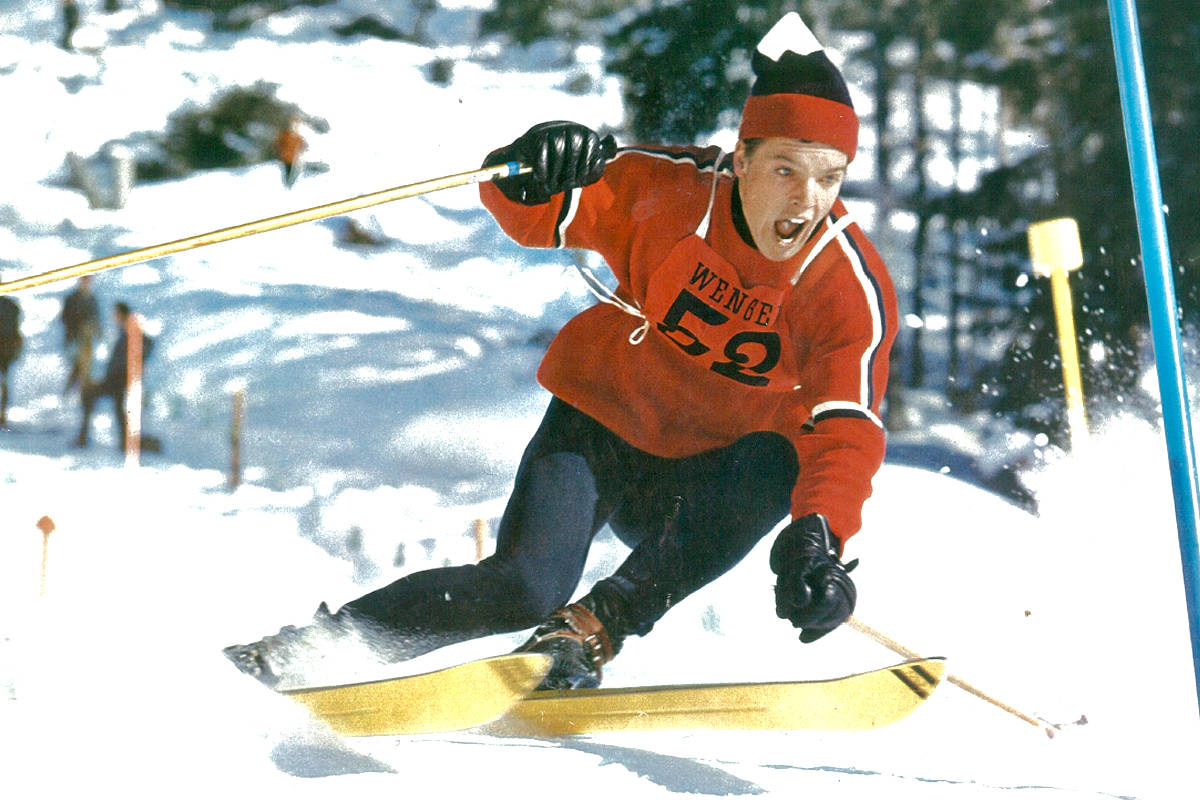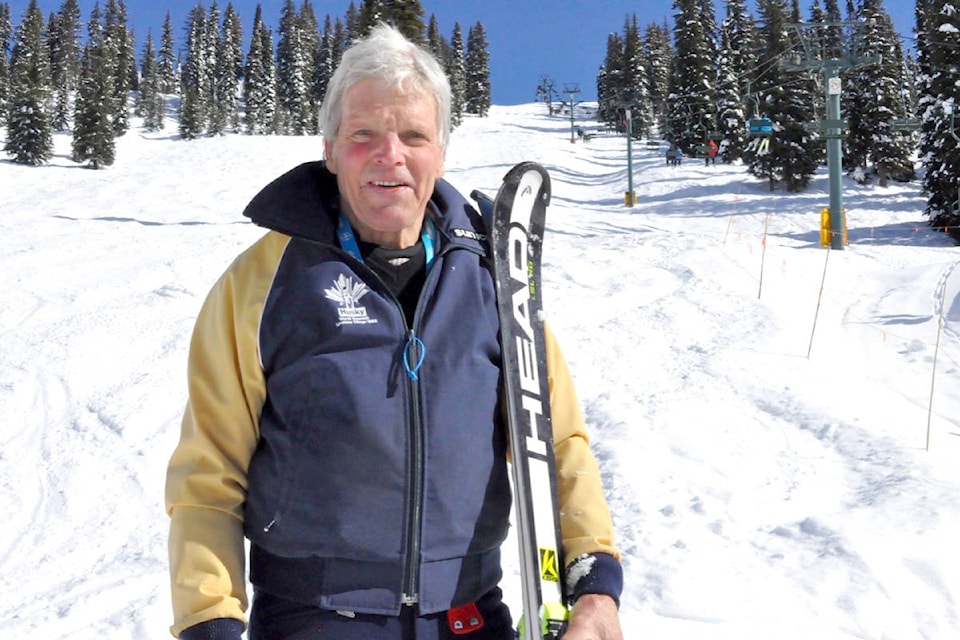Bobby Swan’s ankle hurt and it annoyed the hell out of him.
He twisted it in December when one of his bindings became loose. After passing a gate, Swan’s heel popped out of the binding, the toe stayed in and the damage was done.
He’s back on the hill now, but for over two months every step was a painful reminder that the former Olympic athlete, a perfectionist who stripped away everything but the sport from his life, had made a mistake.
“I hope this doesn’t set me back. That friggin…,” and here Swan bit his tongue.
Swan is one of Canada’s pioneer skiers. He was part of the first national ski team, competed in the 1964 and 1968 Winter Games and during the season still goes to Whitewater Ski Resort three times a week — ankle permitting, that is.
Now 75 years old, little has changed in Swan’s life since he moved to the West Kootenay permanently in 1982. He lives in a log cabin located between Ymir and Salmo that he built himself. He’s frugal with money, living on a pension of $1,000 a month.
Everything is in service to the sport that has driven Swan since he started skiing shortly after he learned how to walk.
Whitewater Ski Team coach Dylan Henderson half-jokingly refers to Swan as a hermit.
“His whole life is 100 per cent devoted to ski racing,” says Henderson. “There’s not a whole lot of other stuff in his life that matters at all.”
Swan was born in Winnipeg but grew up in Chelsea, Que. He started learning to ski at two or three years old on a little hill near his home, and went on ski trips to Vermont with an aunt and uncle. In 1955 they encouraged him to compete in a race.
Seven years later he won the Canadian junior slalom, and was the final skier chosen to join the fledgling national team in 1963.
The team was based out of Nelson. They skied at the old Silver King Lodge and at Red Mountain, while also hiking up Kokanee Glacier for summer skiing. (Swan still remembers returning from the glacier in 1963 to find out President John F. Kennedy had been assassinated.)
The sport, Swan recalls, was nearly unrecognizable to what it is today. In the 1950s and 60s, skiing was far slower, the skis were bigger, and bindings were usually just tied-up lanyards. Skiers dressed in sweaters and toques. No one used goggles.
“They are way more athletic and stronger now,” says Swan. “We never trained that hard. The guy that’s winning now, [Marcel Hirscher]? God. He’s stronger than hell. They train all year long just about.”
During that time Swan became fond of the area. He took chemistry at Notre Dame University — “Never used it,” he says now — and kept Nelson in mind when he first left for the 1964 Winter Games in Austria.
Swan had trouble at his first Olympics when he missed a gate on his first qualifying run. “I went again and my time was good enough to get in, [but] then the course was falling apart and gates were falling down and I slipped on one.”
Four years later at the ‘68 Olympics in France, the same Games that Nancy Greene won gold and silver on the women’s side, Swan qualified but crashed in the finals. “That was a foggy slalom. No one could see anything.”
Swan, who also competed on the World Cup circuit, was removed from the national team a year after the France Games. The team decided to focus less on the technical skiing involved in Swan’s preferred disciplines of slalom and giant slalom, and more on the speed of downhill, which in turn led to the era of the Crazy Canucks.
So Swan went pro in 1972 and competed on a sponsored circuit in the United States through the rest of the decade. In 1982 he bought land near Salmo, spent another two years clearing it himself and building his home, and has been there ever since.
But, even away from the international spotlight, his passion never waned.
“I don’t have anything else in my life anyway,” he says. “I never worked too much. I coached. I didn’t like working with people. I like being by myself.”
Swan, who’s referred to as Swabber by locals, trains at Whitewater as well as on his own short course that he built on a partial logging road next to his home.
He also makes his own gates using willow saplings he cuts himself, which he’s been doing since he was a 12 years old.
When he coached a Salmo team that couldn’t afford proper gates, Swan used what became known as Swabber Sticks to train a group of teenagers that at the time included Henderson.
“He still cuts willows every year and uses Swabber Sticks to train with,” says Henderson. “He uses them at Whitewater because he can carry a bundle of 40 for a whole course and it doesn’t weigh hardly anything. He can just go and set these sticks and bundle them up and stash them in the trees.”
Swan still competes in at least six events per season. His health — ankles notwithstanding — is good, and he is passionate about beating other skiers in his age group.
And if he makes any mistakes, steer clear. Swan says he is less than zen during a race.
“It’s a passion to do it right.”
tyler.harper@nelsonstar.com
Like us on Facebook and follow us on Twitter

